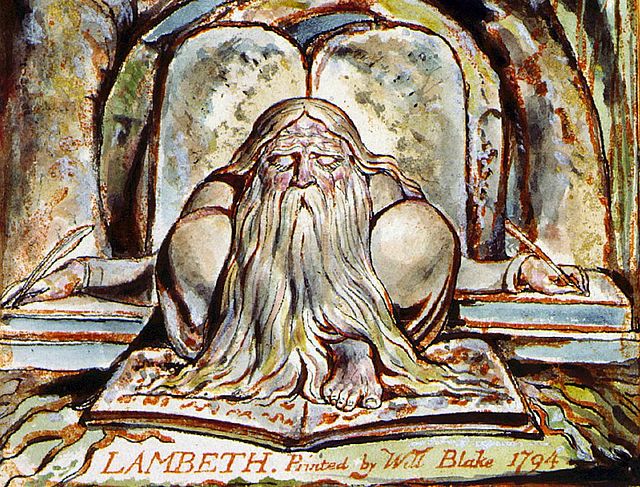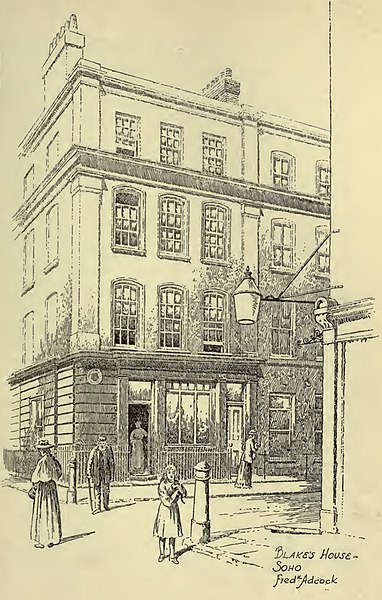In the mythology of William Blake, Urizen is the embodiment of conventional reason and law. He is usually depicted as a bearded old man; he sometimes bears architect's tools, to create and constrain the universe; or nets, with which he ensnares people in webs of law and conventional society. Originally, Urizen represented one half of a two-part system, with him representing reason and Los, his opposition, representing imagination. In Blake's reworking of his mythic system, Urizen is one of the four Zoas that result from the division of the primordial man, Albion, and he continues to represent reason. He has an Emanation, or paired female equivalent, Ahania, who stands for Pleasure. In Blake's myth, Urizen is joined by many daughters with three representing aspects of the body. He is also joined by many sons, with four representing the four elements. These sons join in rebellion against their father but are later united in the Last Judgment. In many of Blake's books, Urizen is seen with four books that represent the various laws that he places upon humanity.

Blake's watercoloured etching The Ancient of Days.
Urizen from the front page of Copy G (c. 1818) of The Book of Urizen currently held by the Library of Congress (detail)
Urizen with his net – The Book of Urizen, copy G, object 27 c.1818 (detail)
Urizen striding through a darkened space. The William Blake Archive identifies the image as describing "the episode in which "Urizen explor'd his dens / Mountain, moor, & wilderness, / With a globe of fire lighting his / journey" (The First Book of Urizen plate 22, Erdman page 81)." This illustration comes from Blake's "Small Book of Designs", one of his illuminated art books, that wasn't printed in mass (though some images are comparable to those in other works). This illustration is object 7 and plate 23 of "
William Blake was an English poet, painter, and printmaker. Largely unrecognised during his life, Blake is now considered a seminal figure in the history of the poetry and visual art of the Romantic Age. What he called his "prophetic works" were said by 20th-century critic Northrop Frye to form "what is in proportion to its merits the least read body of poetry in the English language". While he lived in London his entire life, except for three years spent in Felpham, he produced a diverse and symbolically rich collection of works, which embraced the imagination as "the body of God", or "human existence itself".
Portrait by Thomas Phillips (1807)
28 Broad Street (now Broadwick Street) in an illustration of 1912. Blake was born here and lived here until he was 25. The house was demolished in 1965.
The archetype of the Creator is a familiar image in Blake's work. Here, the demiurgic figure Urizen prays before the world he has forged. The Song of Los is the third in a series of illuminated books painted by Blake and his wife, collectively known as the Continental Prophecies.
Oberon, Titania and Puck with Fairies Dancing (1786)








